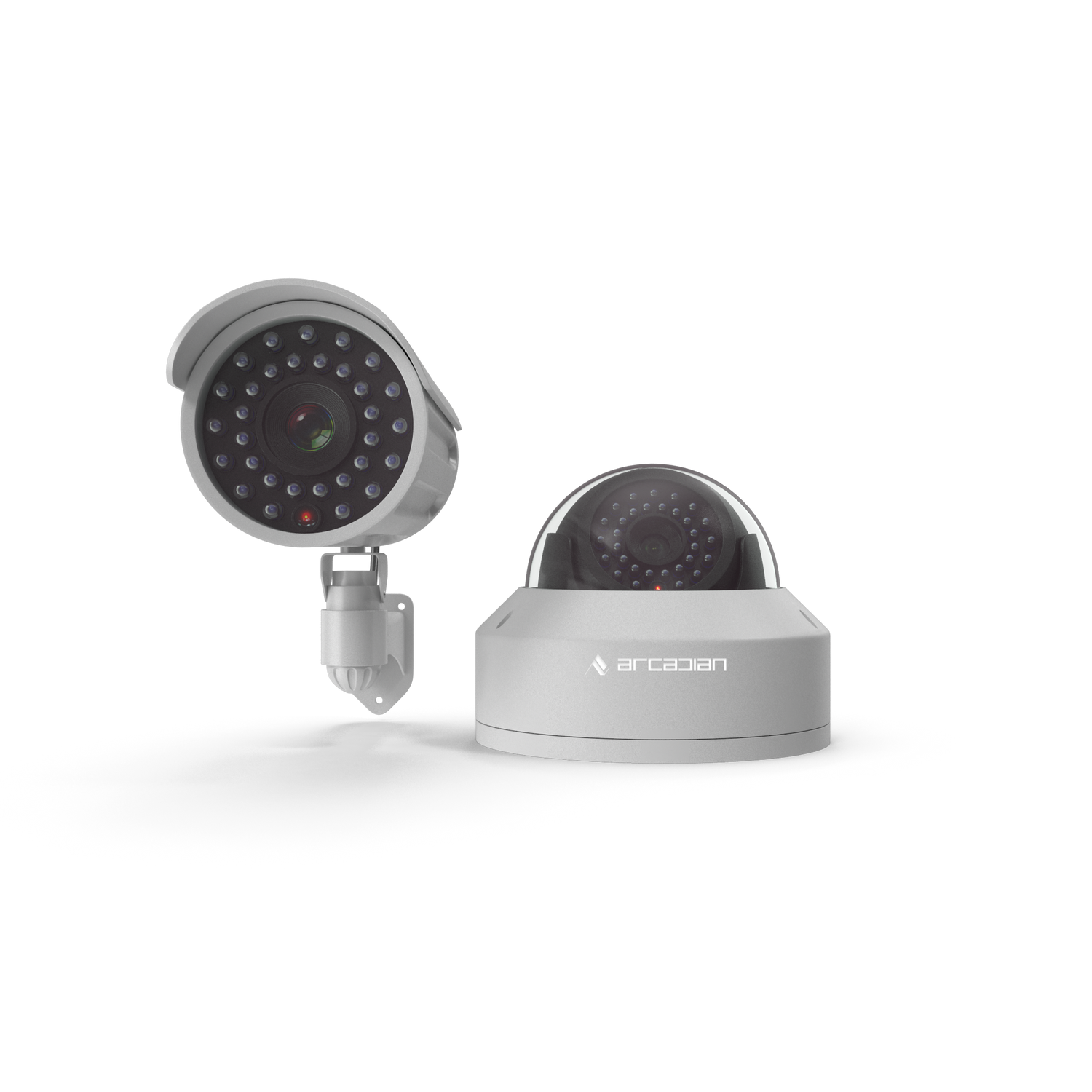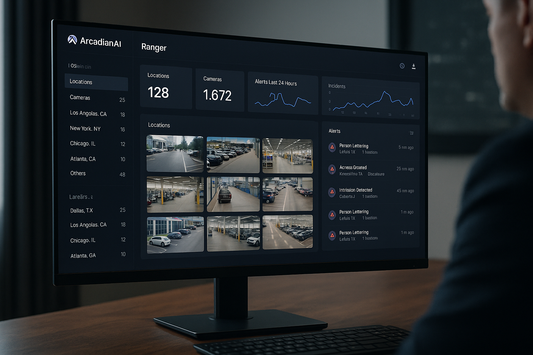Introduction: Beyond Security—Efficiency Unlocked
Security systems are no longer just about protecting assets; they’ve become critical tools for streamlining operations and boosting efficiency. Integrated security systems, which combine surveillance, access control, alarms, and analytics on a single platform, are revolutionizing how businesses manage their security and daily operations.
In this blog, we’ll explore how integrated security systems improve operational efficiency, reduce costs, and enhance decision-making through centralized control and actionable insights.
1. Centralized Management for Streamlined Operations
The Challenge Without Integration:
Traditional security setups often involve multiple, disconnected systems—each requiring separate management. This can lead to inefficiencies, such as delayed responses and increased labor costs.
How Integration Helps:
-
Unified Dashboards: Manage cameras, access control, and alarms from a single interface.
-
Simplified Monitoring: View multiple locations remotely, reducing the need for on-site personnel.
-
Automated Processes: Trigger alarms or lock doors automatically in response to specific incidents.
Example:
A retail chain integrated its surveillance cameras and POS systems. This reduced investigation time for theft incidents by 30% through automated cross-referencing of footage with transaction data.
2. Enhanced Decision-Making with Real-Time Data
The Challenge Without Integration:
Disparate systems produce isolated data, making it difficult to analyze trends or respond effectively to incidents.
How Integration Helps:
-
Real-Time Alerts: Notifications for suspicious activity or breaches are sent immediately.
-
Data Consolidation: Combine inputs from cameras, IoT sensors, and access logs for actionable insights.
-
AI Analytics: Detect patterns like unusual traffic flows or repeated unauthorized access attempts.
Stat: Businesses using integrated systems with AI analytics improve incident response times by 40% (Source: Gartner).
3. Improved Access Control and Employee Management
The Challenge Without Integration:
Managing employee access manually or through isolated systems is time-consuming and prone to errors.
How Integration Helps:
-
Role-Based Access Control (RBAC): Automatically grant or restrict access based on roles or departments.
-
Attendance Tracking: Link access control data with HR systems for accurate attendance records.
-
Remote Management: Adjust access permissions for contractors or temporary staff without physical intervention.
Example:
A manufacturing company integrated its access control and HR systems, reducing payroll errors by 25% through accurate attendance tracking.
4. Cost Savings Through Automation
The Challenge Without Integration:
Manual processes and disjointed systems lead to higher labor costs and inefficiencies.
How Integration Helps:
-
Automated Responses: Trigger lights, locks, or alarms based on sensor inputs, reducing reliance on human intervention.
-
Energy Management: Sync cameras and IoT sensors to adjust lighting or HVAC systems based on occupancy.
-
Proactive Maintenance: Monitor equipment health and receive alerts for maintenance needs, preventing costly breakdowns.
Stat: Integrated security systems reduce operational costs by an average of 20% (Source: Forrester).
5. Enhanced Customer and Employee Safety
The Challenge Without Integration:
Traditional systems often miss potential safety risks due to siloed data or delayed responses.
How Integration Helps:
-
Incident Prevention: Use AI analytics to predict and mitigate risks before they escalate.
-
Emergency Coordination: Automatically notify security personnel and first responders in case of emergencies.
-
Visitor Management: Automate guest check-ins and restrict their access to specific areas.
Example:
A hospital integrated surveillance and visitor management systems to improve patient safety by preventing unauthorized access to restricted areas.
6. Multi-Location Management Made Easy
The Challenge Without Integration:
Managing security across multiple sites often requires separate teams and systems, increasing complexity and costs.
How Integration Helps:
-
Remote Monitoring: Access live feeds and system controls for all locations from a single platform.
-
Consistent Policies: Apply standardized security protocols across locations for uniform compliance.
-
Centralized Reporting: Consolidate data for easier audits and trend analysis.
Use Case:
A global logistics company reduced its security staffing costs by 15% by using integrated systems to monitor warehouses across different regions.
7. Compliance and Regulatory Benefits
The Challenge Without Integration:
Meeting compliance requirements can be cumbersome when data is spread across multiple systems.
How Integration Helps:
-
Automated Logging: Track and store access logs, video footage, and alarm events for regulatory audits.
-
Customizable Reports: Generate compliance reports for GDPR, HIPAA, or PCI-DSS with minimal effort.
-
Data Security: Ensure encryption and secure access across all integrated systems.
Stat: Integrated systems reduce compliance-related costs by 30% compared to non-integrated setups (Source: Ponemon Institute).
8. Scalability for Growing Businesses
The Challenge Without Integration:
As businesses expand, scaling disconnected security systems often leads to inefficiencies and higher costs.
How Integration Helps:
-
Seamless Expansion: Add new devices, locations, or features without disrupting existing systems.
-
Flexible Licensing Models: Pay for what you need and scale as your requirements grow.
-
Future-Ready Infrastructure: Easily integrate emerging technologies like AI analytics or biometric access control.
Example:
A tech company expanded its integrated system to a new office in days, avoiding the downtime associated with installing and configuring separate systems.
Comparison Table: Traditional vs. Integrated Security Systems
| Feature |
Traditional Systems |
Integrated Systems |
| Management Complexity |
High (multiple platforms) |
Low (centralized dashboard) |
| Response Times |
Slower due to siloed data |
Faster with real-time alerts |
| Cost Efficiency |
Higher due to manual processes |
Lower with automation |
| Scalability |
Difficult and costly |
Seamless and cost-effective |
| Data Insights |
Limited and fragmented |
Consolidated and actionable |
Conclusion: Elevating Security and Efficiency Together
Integrated security systems are a game-changer for businesses looking to improve operational efficiency. By centralizing management, automating processes, and providing actionable insights, these systems reduce costs, enhance safety, and streamline daily operations. Whether you’re managing a single location or a global enterprise, integration is the key to smarter, more efficient security.
Ready to transform your operations with integrated security solutions?
👉 Contact Arcadian.ai today to explore scalable, AI-powered systems tailored to your business needs.
Visit Us on Social Media
💼 LinkedIn
🌐 Facebook
📸 Instagram
🎥 YouTube
🎬 TikTok
🐦 X









